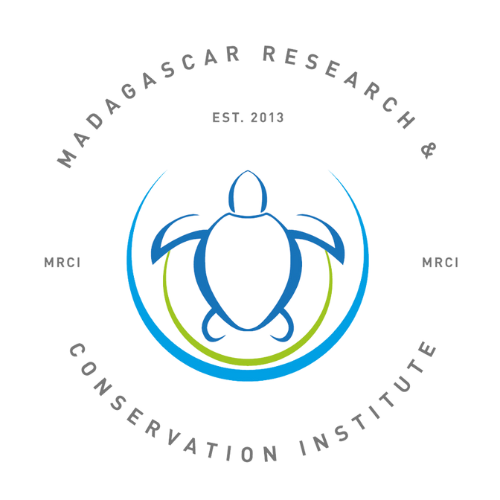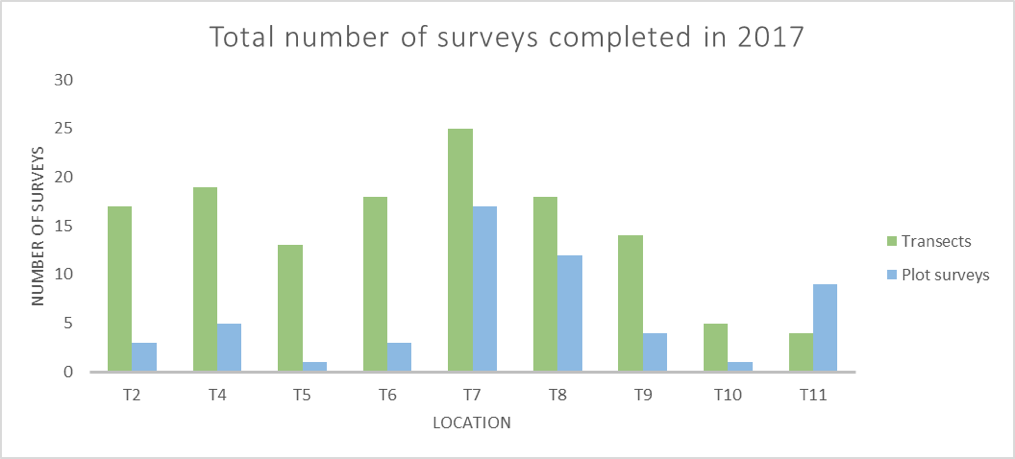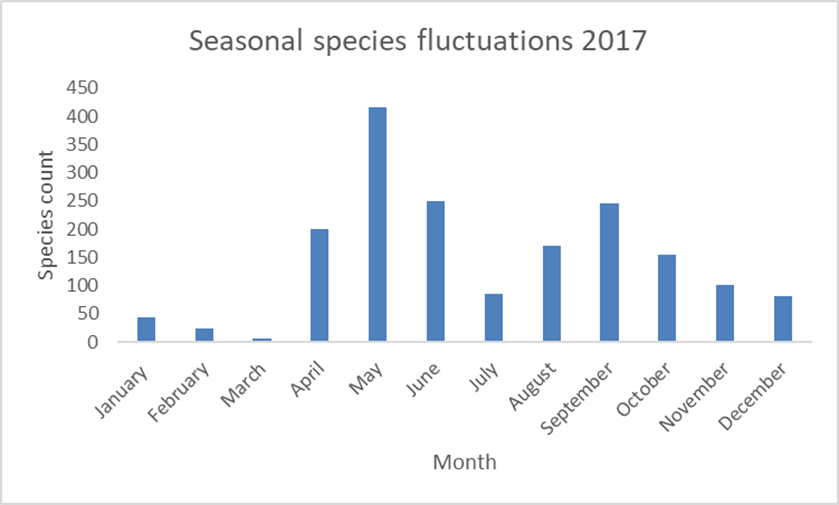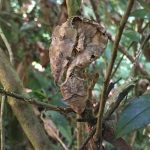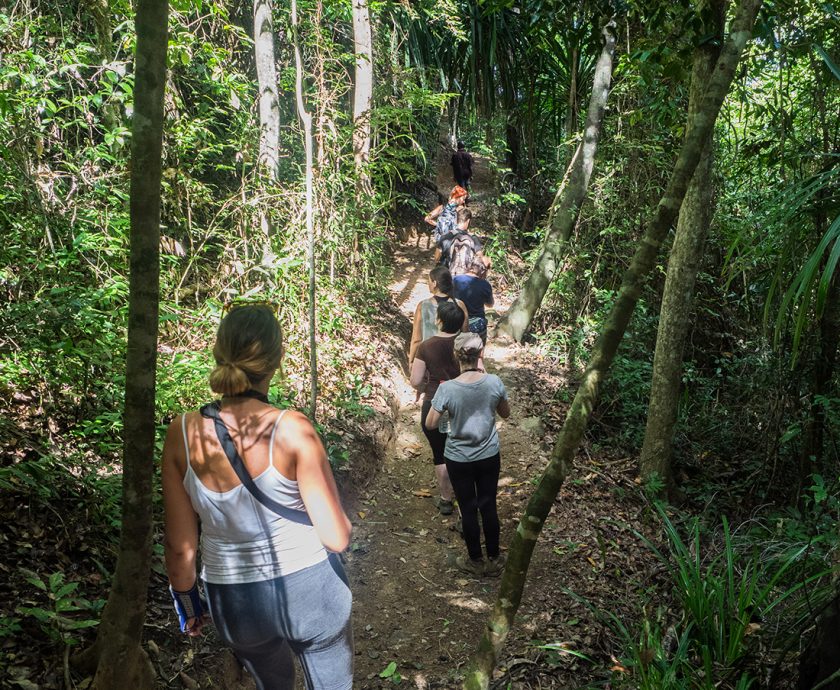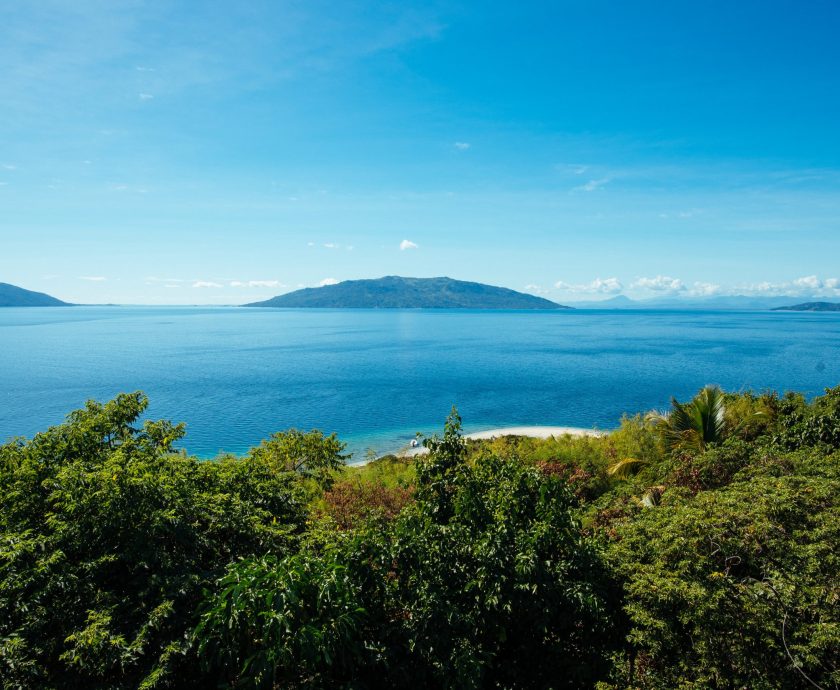Author: Charles Wheeler, MRCI Forest Intern
The MRCI Forest Program saw a very successful 2017, a year of working hard to monitor the biodiversity of Nosy Komba. The staff and volunteers on the forest program carried out a total of 493 surveys for our herpetofaunal, bird and lemur monitoring projects and worked for over 500 hours collecting the important data. The long hard hours our forest volunteers have put in hiking through forests, climbing over rocks and exploring the villages around Nosy Komba, have contributed to the long-term monitoring of the species abundance that is affected by the expansion of human settlements.
Over the course of the year volunteers and forest staff members carried out 133 reptile transects and 57 plot surveys, figure 1, the most common species to be spotted in surveys being the Phelsuma laticauda on the preferred substrate of a banana plant in plantations, figure 2. The forest programme also carried out 110 bird point out surveys and over 121 hours of data collection, which highlighted a clear correlation between seasons and species counts across Nosy Komba, figure 3.
Figure 1. Number of completed transects (n=133) and plot surveys (n=57) from 2017. The most frequently monitored location T7 was in degraded secondary forest and had 25 completed transect surveys and 17 completed plot surveys.
Figure 2. Substrates most commonly recorded with the presence of reptiles or amphibians during line transects or plot surveys in 2017. Banana trees (n= 284) are the most common substrate recorded on transects and plot surveys mainly associated with the Phelsuma species. Woody tree (n= 12) and Tree (n= 62) substrates are less commonly recorded and are more associated with threatened species, e.g. Uroplatus henkeli
Figure 3. Species counts for each month for 2017 illustrating the seasonal fluctuations of species found on Nosy Komba. A clear difference between the dry season months from May (n= 415) until September (n= 245) with the exception of July (n= 85) which have a high count of individuals. Whereas the wet season months November (n= 101) until March (n= 7) have a much lower count of individuals.
In the new year of 2018, the forest program will continue its efforts to monitor the biodiversity of Nosy Komba, whilst bringing in a new more hands on approach to forest conservation. The redirection will have a large focus on Argo-forestry, removal of invasive plant species and active reforestation of larger native tree species. The first month of the new MRCI forest vision has been successful; forest volunteers have been visiting local farmers and plantations to help harvest and plant crops such as vanilla and cocoa. These weekly visits to plantations will initiate a connection between the forest program and our local farming community, as well as providing valuable knowledge of sustainable agriculture to implement on our agro-forest plot purchased late last year.
The newest and most needed project on the forest program is the invasive species removal and reforestation project that has begun this month. The main goals behind this project is to restore the secondary forests on Nosy Komba with large native plant species to increase the biodiversity which has declined due to expansion of human settlements. Our first step towards this goal is to remove the widely spread invasive plant species, Lantana camara. The Lantana is a non-native plant to Madagascar and is used for local medicinal purposes. Unfortunately, the Lantana is a fast-growing plant that thrives in cleared areas of forest and has spread dramatically across the whole of Nosy Komba. This invasive species is a thick bushy plant which creates inter-specific competition for light, water and space therefore reducing biodiversity and creating a monoculture. The MRCI forest program aim to completely remove the lantana in some areas and replace it with tree saplings that have been grown in our newly constructed reforestation nursery.
With the help of more dedicated and passionate forest volunteers in the coming year, we hope to continue making a positive difference to the biodiversity and ecology of this important small island in the north of Madagascar.
Read More about the MRCI Forest Conservation Program!
